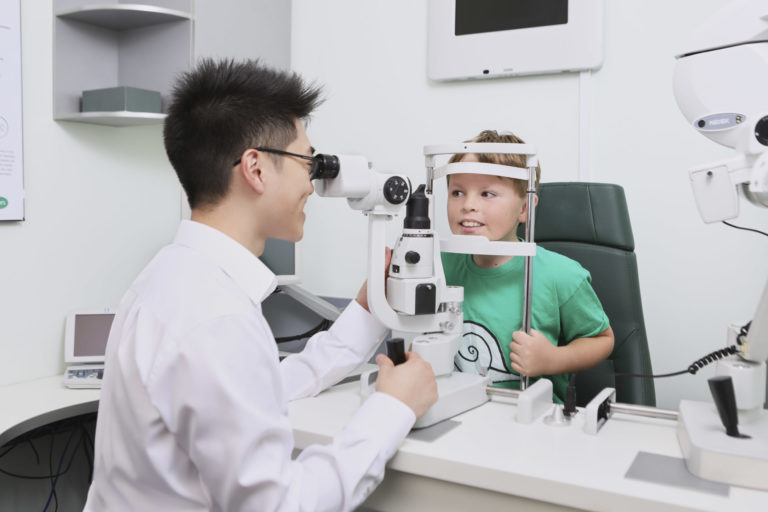Optometrists are calling on parents and teachers – and anyone with children in their care for extended periods – to employ safer screen practices, including limiting up-close tasks, taking regular screen breaks and regular eye tests.
With children being diagnosed with vision problems younger than ever before, eye health tests should be considered an essential element of the back-to-school routine.
Myopia, or short-sightedness, is on the rise globally, with the World Health Organisation (WHO) estimating that 52 per cent of the global population will have myopia by 2050.1 And, there’s an alarming incidence spike amongst children, with time on digital screens as a major contributing factor.
This sparks concern that some children’s vision issues are being left untreated, when early detection is key to the management. On top of this, nearly one in three (29 per cent) parents of children aged nine years old or younger have never had their children’s eyesight tested.

Myopia must be taken seriously – and treated effectively
While myopia is typically successfully managed with prescription lenses, if left undiagnosed, it can impact daily life – including a child’s ability to engage with education effectively.
EducationDaily spoke to Specsavers optometrist Michael Angerame about the importance of taking children to have their first eye test before starting school.
He says it’s a decision that can detect and correct or manage any issues, so children’s vision issues that can impact education don’t go untreated.
“Children’s eyes are still developing during their schooling years, and they can’t always tell you if they may not be able to see properly,” he says.
“If your child complains about headaches, blurred vision, trouble focusing or any other issues with their eyes, I recommend booking an appointment with an optometrist immediately, rather than waiting until their next check-up.”
Mr Angerame also shared some practical tips to help prevent digital eye strain – ideal for both students and educators about to embark on a busy new school year.
Top tips for digital eye strain include:
- Follow the 20-20-20 rule. This means, every 20 minutes remind children to shift their eyes to look at an object at least 20 metres away, for at least 20 seconds. The easiest way to do this is to take small ‘window’ breaks and look out at a faraway object to give tired eyes a break from the screen.
- Take breaks outside and encourage outside play. Research shows us that spending 2 hours outdoors is a protective factor during daylight hours for children developing myopia or short-sightedness.
- Remind children to blink. Blinking regularly keeps the surface of your eyes from drying out.
- Keep a bottle of water close by. Your eyes dry out when you’re dehydrated so making sure children are drinking plenty of water throughout the day is important
Effective treatment of eye strain can help prevent future issues
With most schools requiring students to spend more time using tech tools – including iPads or laptops – the issue of digital eye strain can’t be ignored.
But by following some simple tips to help minimise the potential harm – and looking out for warning signs that young eyes need additional support and care – families can help protect their children’s eye health to help the new school year start positively.








